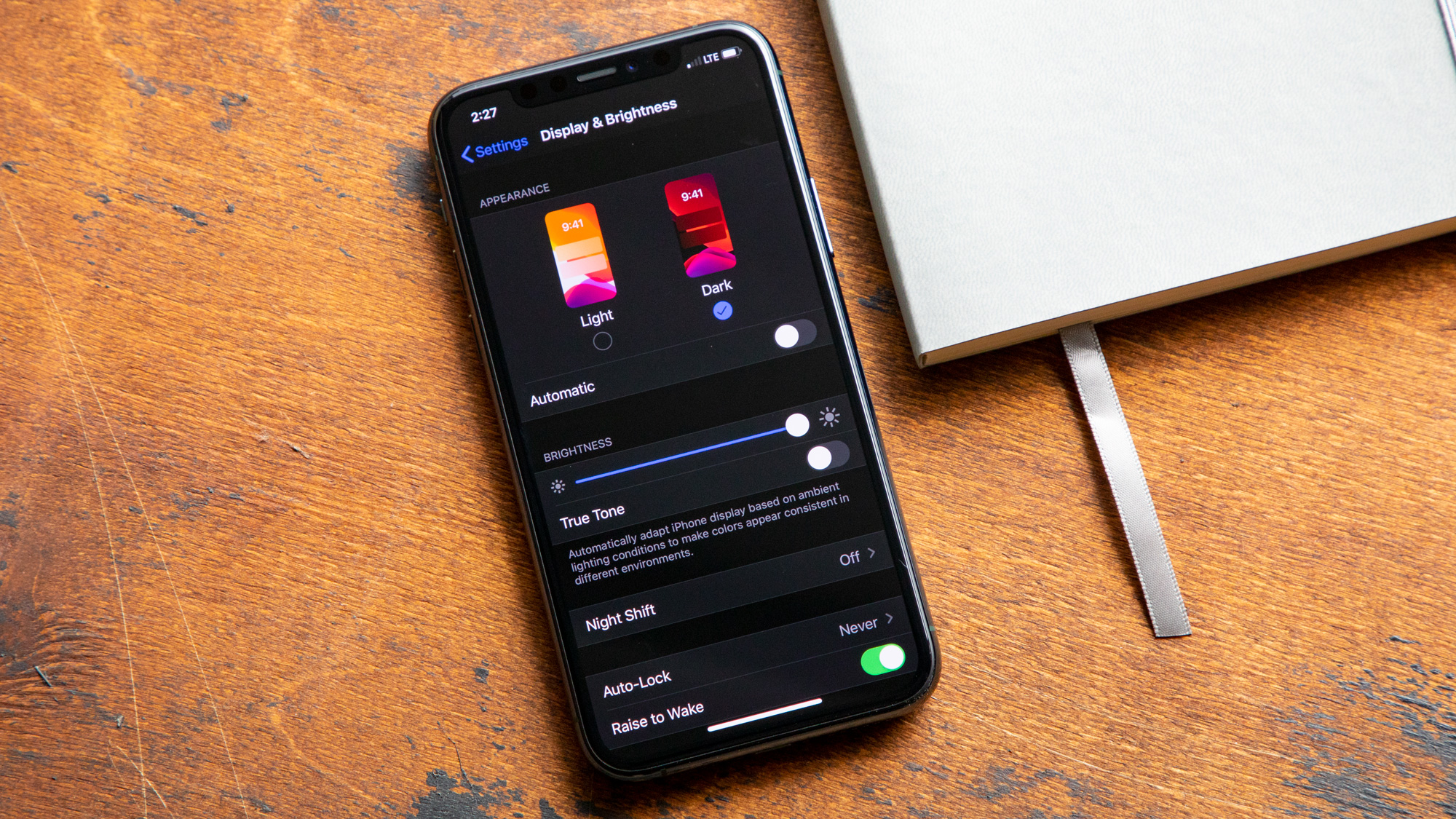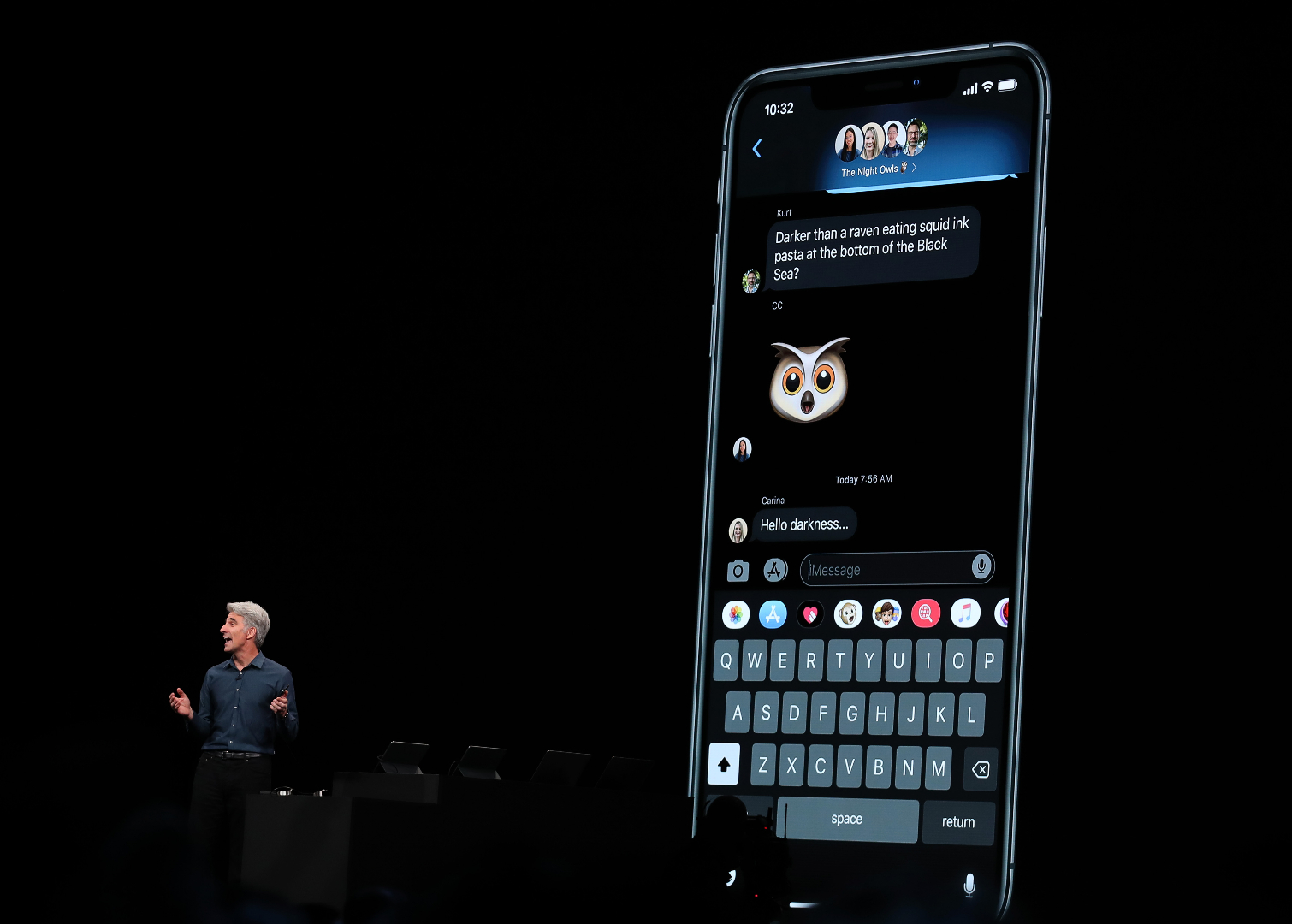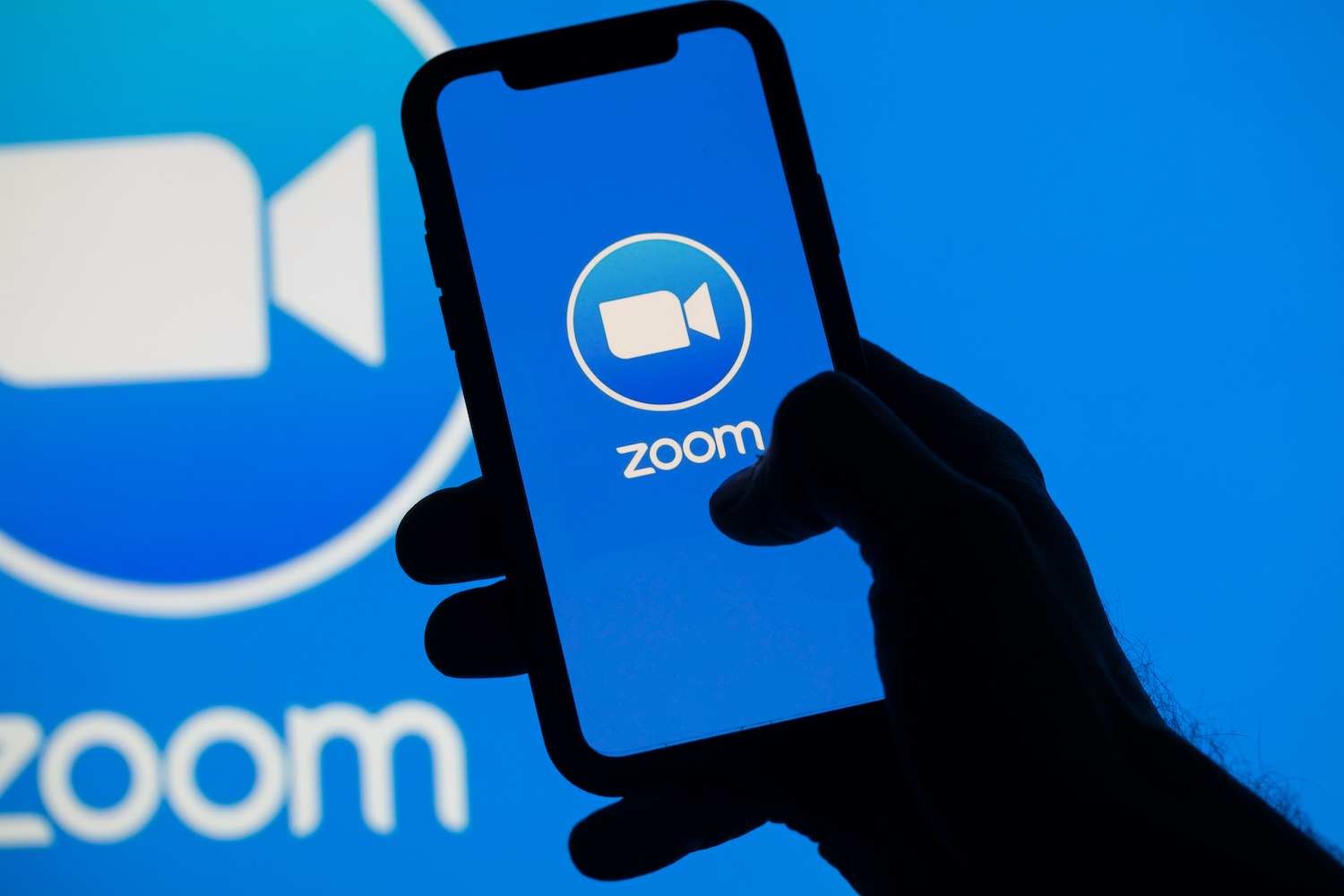What Is Dark Mode on iOS 13? Here's What You Need to Know
iOS 13's big feature looks cool and has other benefits
The “oohs and ahs” were palpable (and a little annoying) during Apple’s WWDC 2019 keynote, when we first got our look at Dark Mode in iOS 13. The feature first came to macOS Mojave, but now it's on your iPhone, too, with iOS 13 available to download.
But what is the big deal about Dark Mode on the iPhone? And why are people so excited about this?

There are three main benefits of Dark Mode on iOS 13, as we found in our iOS 13 review — and there’s a one that's missing here that I will explain.
- Dark Mode looks cool.
- Dark Mode makes content easier on the eyes.
- You will piss off other people around you less when Dark Mode's enabled.
As someone who spends entirely too much time looking at his phone, I appreciate the latter two benefits the most. I had a chance to get a first look at Dark Mode on the iPhone XS Max and got even more time when I was reviewing the iPhone 11, iPhone 11 Pro, and iPhone 11 Pro Max. And there is a welcome subtlety to the whole aesthetic.
White backgrounds can be a bit overwhelming, but Dark Mode lets you focus on the main content more, whether it's new Memoji stickers in messages or browsing through playlists in Apple Music. Browsing through photos also feels more intimate and immersive with Dark Mode engaged.

It’s also easy to turn on Dark Mode. You can do it right from within Control Center with a dedicated button. Even better, you can schedule Dark Mode to turn on and off at a specific time or based on sunrise and sunset.
Apple clearly thought about how Dark Mode affects the entire iOS interface. Say you’re in email and you’re composing a new message. Your inbox will be a lighter shade of black in the background, while the compose window is true black. This layering makes using Dark Mode more intuitive for navigating iOS 13.
Apple is letting third-party developers tap into its Dark Mode API so that their apps are optimized in a similar way. Some apps, like Twitter, already work with the feature, and we'd expect more app updates now that iOS 13 is live.
I can see myself using Dark Mode a lot, especially on a plane, where I don’t want to disturb someone sleeping next to me with a blinding bright screen. I also won’t have to dial down the brightness too much, because the darker background should mitigate that issue.
What Apple is not promising is any sort of battery life savings with Dark Mode, even on OLED-based iPhones. It’s true that the pixels on OLED displays turn off when displaying black, which could save power. But it really depends on the type of content you are viewing.
I can guarantee you that we would see similar results on the Tom’s Guide Battery Test with Dark Mode on and off, and that’s because our test surfs the web. Most sites are still primarily white pages with text and images, though there are some exceptions. You won’t necessarily see longer endurance when watching movies and TV shows, because again it depends on the content you’re watching—unless you decide to watch the Game of Thrones “The Long Night” episode on repeat.
Apple has done some other things to spruce up Dark Mode, such as a new selection of wallpapers. But it’s really about making things more comfortable for you and everyone around you.
- WWDC News: iOS 13, Mac Pro, macOS Catalina and More
- 6 Reasons You'll Want iOS 13 on Your iPhone
- iPhone 11 vs. iPhone 11 Pro vs iPhone 11 Pro Max
Sign up to get the BEST of Tom's Guide direct to your inbox.
Get instant access to breaking news, the hottest reviews, great deals and helpful tips.
Mark Spoonauer is the global editor in chief of Tom's Guide and has covered technology for over 20 years. In addition to overseeing the direction of Tom's Guide, Mark specializes in covering all things mobile, having reviewed dozens of smartphones and other gadgets. He has spoken at key industry events and appears regularly on TV to discuss the latest trends, including Cheddar, Fox Business and other outlets. Mark was previously editor in chief of Laptop Mag, and his work has appeared in Wired, Popular Science and Inc. Follow him on Twitter at @mspoonauer.

